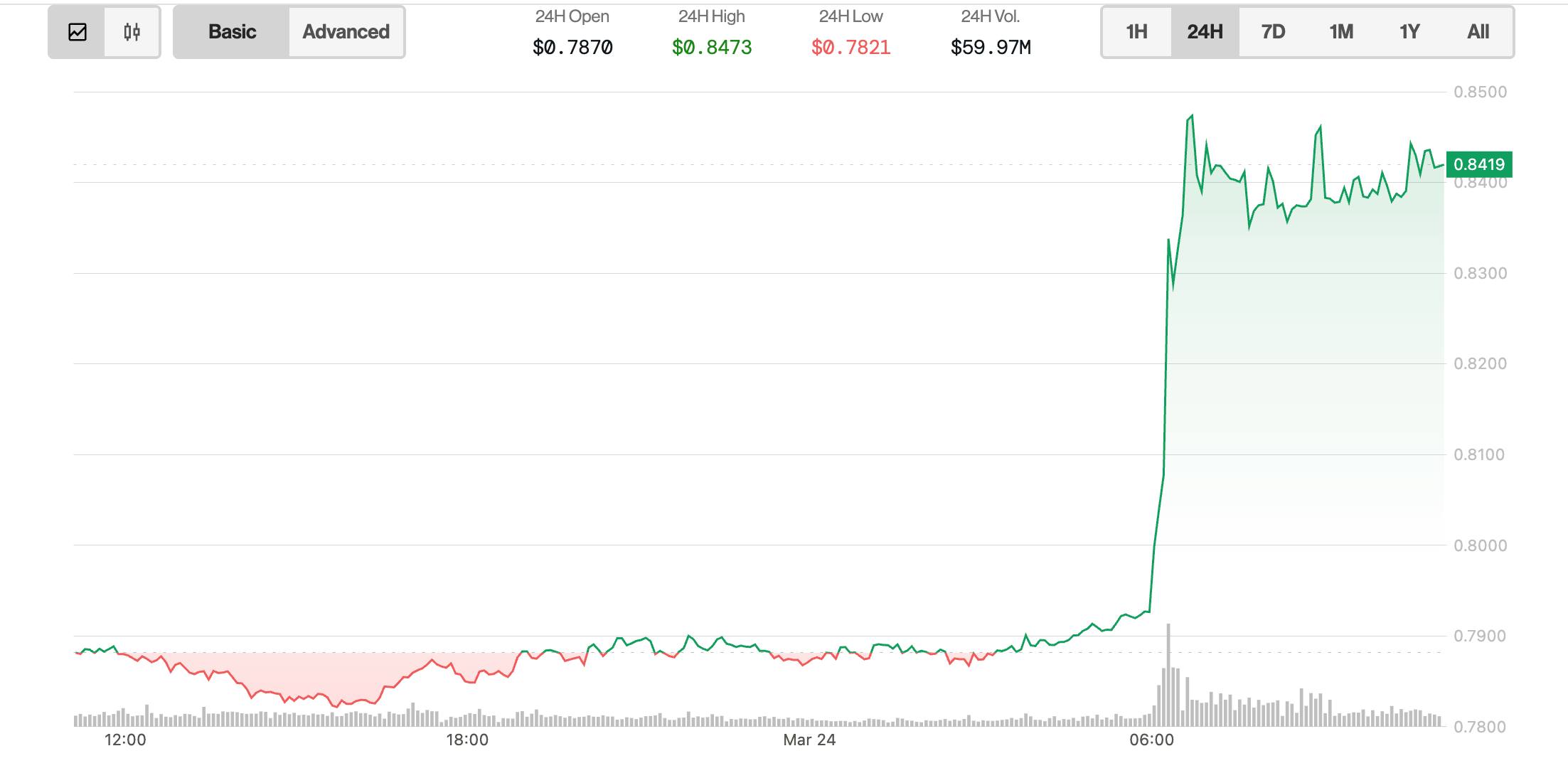Pi coin mainnet migration issues
As Pi Network prepares for its next mainnet migration wave on June 28, 2025, users are reporting a cascade of issues that threaten to derail the long-anticipated upgrade.
The Pi coin migration process, designed to move tokens from the mobile app to the open Pi blockchain, is hitting major snags. Thousands of users are encountering Know Your Customer (KYC) issues, two-factor authorization (2FA) problems and wallet balance errors, even after successfully completing every step.
For many, this was meant to be the long-awaited moment when Pi (PI) coins would finally be transferred to the open network.
But, instead of a smooth rollout, users describe a frustrating maze of technical failures. Reports of wallets stuck in pending, balances disappearing or Pi coins not showing up are flooding platforms like Reddit, YouTube and X.
In many cases, users say they’ve followed the migration checklist precisely — only to see their progress reset without warning, as Pi Network support remains mostly unresponsive.
Did you know? Pi uses a fork of Stellar’s SCP and will eventually transition to its own improved-proof-of-stake. But this only applies once decentralized nodes are fully operational.
Pi Network migration: What’s it all about?
Launched in 2019, Pi Network allows users to “mine” its cryptocurrency via a mobile app. Over the years, millions accumulated Pi tokens with minimal effort or energy consumption.
After extended testnet phases, the Pi mainnet officially launched in early 2025, aiming to establish itself as a mobile-first, mass-adoption-focused decentralized finance (DeFi) platform.

The major shift came with the Horizon Upgrade in May 2025. The upgrade brought core blockchain functionalities: validator-based consensus, integration of over 100 decentralized applications (DApps) and a $100-million ecosystem fund.
To migrate Pi tokens to the mainnet, users must complete a five-step Mainnet Checklist, which includes:
- Completing Pi Network KYC verification
- Creating a non-custodial Pi wallet via the Pi Browser
- Selecting a token lockup configuration
- Enabling 2FA security
- Signing the official Pi Token Acknowledgement form.
Newly migrated tokens are subject to a 14-day holding period to stabilize the network and prevent mass dumping.
Although a grace period was provided until March 14, 2025, many users are only now completing the checklist — just as technical bugs threaten to stall the next migration wave.
KYC challenges in Pi Network and their impact on migration success
A key roadblock for many is step 9 in the Pi Network migration process: passing the Know Your Customer (KYC) check.
Thousands of users have reported that despite passing KYC months ago, they remain stuck. Wallet balances show as zero, migration status loops or stalls, and tokens never leave the app.
Some users report seeing a “tentative approval” status in their KYC field, a limbo state where the system recognizes an attempted KYC but doesn’t complete the sync. It’s not the same as a rejection, but it effectively blocks the migration.
One user summed it up:
“Give me the damn $Pi. I’ve worked hard for six years… Why this constant delay?”
While official support documents blame issues like poor photo quality or mismatched documents, most current complaints come from users who’ve already cleared those hurdles. Instead, they’re stuck due to KYC syncing errors that lack clear resolution paths.
In some cases, users have tried workarounds — like switching devices or reapplying — but success is inconsistent.
2FA problem Pi Network: Pi Network delay
Another frequent complaint is the Pi Network 2FA issue.
Rolled out in March 2025, the 2FA step was designed to secure token transfers via email confirmation. But many users never receive the verification email or get links that are broken, expired or redirect to error screens.
Some users even report that completing the 2FA step causes their migration to reset. Tokens are pushed back into the mobile app, and users are forced to restart the entire Pi migration process from scratch.
“My Pi returned back to the app, I’ve already added the email address twice now but nothing has changed,” one Reddit post reads.
“Pi got reverted on the last day… it’s a disgrace,” says another.

The lack of communication from the Pi Core Team is further compounding user frustration. While they’ve stated 2FA is being “rolled out in phases,” the vague timeline and absence of direct support are fueling speculation that deeper infrastructure delays are to blame.
Why some Pi Network wallets show zero balance after migration
Even users who’ve passed Pi Network KYC, completed the mainnet checklist and successfully confirmed 2FA aren’t always seeing success.
A growing number report a frustrating outcome: They open their Pi wallet, only to see their balance at zero.
In many cases, previously unlocked tokens are nowhere to be found. Some say the balance appeared momentarily — only to vanish minutes later.
“My transferrable balance went to zero today, did not transfer to my wallet,” one user wrote.
“Same here buddy,” wrote another in response, with the following screenshot attached.

Why is the Pi Network so buggy?
While the Pi Core Team has yet to offer a clear technical explanation, community developers speculate that the problems stem from backend sync failures, UI delays or missed manual steps, such as transferring migrated tokens from the transaction history into the available wallet section.
The timing of these balance errors is adding fuel to the fire. Over the first two weeks of June 2025, Pi coin’s price has slipped by 4%-5%, trading at approximately $0.60-$0.64. That marks a 78% drop from its early-year peak, raising concerns that liquidity issues and internal wallet errors are harming broader trust.
One particular wallet — ending in “ODM” (last characters of a Pi whale wallet) and reportedly holding over 276 million Pi tokens — has drawn suspicion, with users speculating it may be tied to insider liquidity management.
While there’s no confirmed link to the core team, the speculation reflects a growing sense of mistrust.
Scammers are also exploiting the chaos. With Pi coins missing and wallets failing to sync, fake support agents are targeting confused users. They’re distributing phishing links, fake migration forms and fraudulent “KYC reset” services to steal credentials and tokens.
Did you know? The PCT (core team) holds ~100 billion PI in genesis wallets and 20 billion tokens split across 20,000 wallets, with no public lock-up info.
When will Pi coins be transferred?
Under growing scrutiny, the Pi Core Team has begun publishing updates across its official channels, including the Pi Browser, social media and app notifications. These updates acknowledge problems with KYC verification, 2FA errors and wallet sync failures.
Their guidance emphasizes that technical fixes are in progress, but users must also ensure all prerequisites are fulfilled.
Recommended steps include:
- Rechecking the Mainnet Checklist in the Pi Browser
- Verifying that 2FA settings and email confirmation are complete
- Clearing the Pi app cache or reinstalling it
- Updating to Pi app version 1.41.0, which includes multiple backend patches.
A special notice was also issued for Chinese users, where high rates of stuck migrations were reported. After updating the app, users were asked to watch a compliance explainer video during login. According to community feedback, this step helped unstick frozen balances and resolve pending 2FA problems for many.
Still, there’s no published roadmap, technical breakdown or ETA for full resolution. And as more tokens enter the unlocking phase, the community is left wondering: When will Pi coins actually be transferred?
Did you know? While over 100 Pi-based apps have been developed in its closed mainnet, few have launched publicly or are mass-adoption ready.
Looking ahead: Pi coin release date?
With the June 28 mainnet migration wave looming, Pi Network is facing a high-stakes test.
This round is expected to include:
- Secondary migrations for tokens exiting their 14-day lockup
- Bonus and referral rewards that failed to appear after the first wave
- A large inflow of newly eligible users completing migration for the first time.
But none of that matters if balances keep vanishing and wallet states remain broken. The trust issue is becoming as urgent as the tech problem.
Pi Network has branded itself as a decentralized alternative to centralized crypto apps: a platform driven by users, for users. But the credibility of that message hinges on the reliability of Pi coin mainnet migration and the integrity of the Pi wallet system.
The risks of continued failure are real:
- More users may exit the ecosystem, cashing out once tokens unlock.
- Community sentiment could erode further amid missing payouts.
- Scammers may escalate, using the chaos to impersonate support and drain funds.
- Regulators could take notice if financial losses or privacy violations grow.
The burden now lies with the Pi Core Team to restore functionality and user confidence. If they can fix the issues around KYC verification, 2FA authentication and wallet synchronization in time, Pi Network may still deliver on its promises.
Pi coin mainnet migration issues
As Pi Network prepares for its next mainnet migration wave on June 28, 2025, users are reporting a cascade of issues that threaten to derail the long-anticipated upgrade.
The Pi coin migration process, designed to move tokens from the mobile app to the open Pi blockchain, is hitting major snags. Thousands of users are encountering Know Your Customer (KYC) issues, two-factor authorization (2FA) problems and wallet balance errors, even after successfully completing every step.
For many, this was meant to be the long-awaited moment when Pi (PI) coins would finally be transferred to the open network.
But, instead of a smooth rollout, users describe a frustrating maze of technical failures. Reports of wallets stuck in pending, balances disappearing or Pi coins not showing up are flooding platforms like Reddit, YouTube and X.
In many cases, users say they’ve followed the migration checklist precisely — only to see their progress reset without warning, as Pi Network support remains mostly unresponsive.
Did you know? Pi uses a fork of Stellar’s SCP and will eventually transition to its own improved-proof-of-stake. But this only applies once decentralized nodes are fully operational.
Pi Network migration: What’s it all about?
Launched in 2019, Pi Network allows users to “mine” its cryptocurrency via a mobile app. Over the years, millions accumulated Pi tokens with minimal effort or energy consumption.
After extended testnet phases, the Pi mainnet officially launched in early 2025, aiming to establish itself as a mobile-first, mass-adoption-focused decentralized finance (DeFi) platform.

The major shift came with the Horizon Upgrade in May 2025. The upgrade brought core blockchain functionalities: validator-based consensus, integration of over 100 decentralized applications (DApps) and a $100-million ecosystem fund.
To migrate Pi tokens to the mainnet, users must complete a five-step Mainnet Checklist, which includes:
- Completing Pi Network KYC verification
- Creating a non-custodial Pi wallet via the Pi Browser
- Selecting a token lockup configuration
- Enabling 2FA security
- Signing the official Pi Token Acknowledgement form.
Newly migrated tokens are subject to a 14-day holding period to stabilize the network and prevent mass dumping.
Although a grace period was provided until March 14, 2025, many users are only now completing the checklist — just as technical bugs threaten to stall the next migration wave.
KYC challenges in Pi Network and their impact on migration success
A key roadblock for many is step 9 in the Pi Network migration process: passing the Know Your Customer (KYC) check.
Thousands of users have reported that despite passing KYC months ago, they remain stuck. Wallet balances show as zero, migration status loops or stalls, and tokens never leave the app.
Some users report seeing a “tentative approval” status in their KYC field, a limbo state where the system recognizes an attempted KYC but doesn’t complete the sync. It’s not the same as a rejection, but it effectively blocks the migration.
One user summed it up:
“Give me the damn $Pi. I’ve worked hard for six years… Why this constant delay?”
While official support documents blame issues like poor photo quality or mismatched documents, most current complaints come from users who’ve already cleared those hurdles. Instead, they’re stuck due to KYC syncing errors that lack clear resolution paths.
In some cases, users have tried workarounds — like switching devices or reapplying — but success is inconsistent.
2FA problem Pi Network: Pi Network delay
Another frequent complaint is the Pi Network 2FA issue.
Rolled out in March 2025, the 2FA step was designed to secure token transfers via email confirmation. But many users never receive the verification email or get links that are broken, expired or redirect to error screens.
Some users even report that completing the 2FA step causes their migration to reset. Tokens are pushed back into the mobile app, and users are forced to restart the entire Pi migration process from scratch.
“My Pi returned back to the app, I’ve already added the email address twice now but nothing has changed,” one Reddit post reads.
“Pi got reverted on the last day… it’s a disgrace,” says another.

The lack of communication from the Pi Core Team is further compounding user frustration. While they’ve stated 2FA is being “rolled out in phases,” the vague timeline and absence of direct support are fueling speculation that deeper infrastructure delays are to blame.
Why some Pi Network wallets show zero balance after migration
Even users who’ve passed Pi Network KYC, completed the mainnet checklist and successfully confirmed 2FA aren’t always seeing success.
A growing number report a frustrating outcome: They open their Pi wallet, only to see their balance at zero.
In many cases, previously unlocked tokens are nowhere to be found. Some say the balance appeared momentarily — only to vanish minutes later.
“My transferrable balance went to zero today, did not transfer to my wallet,” one user wrote.
“Same here buddy,” wrote another in response, with the following screenshot attached.

Why is the Pi Network so buggy?
While the Pi Core Team has yet to offer a clear technical explanation, community developers speculate that the problems stem from backend sync failures, UI delays or missed manual steps, such as transferring migrated tokens from the transaction history into the available wallet section.
The timing of these balance errors is adding fuel to the fire. Over the first two weeks of June 2025, Pi coin’s price has slipped by 4%-5%, trading at approximately $0.60-$0.64. That marks a 78% drop from its early-year peak, raising concerns that liquidity issues and internal wallet errors are harming broader trust.
One particular wallet — ending in “ODM” (last characters of a Pi whale wallet) and reportedly holding over 276 million Pi tokens — has drawn suspicion, with users speculating it may be tied to insider liquidity management.
While there’s no confirmed link to the core team, the speculation reflects a growing sense of mistrust.
Scammers are also exploiting the chaos. With Pi coins missing and wallets failing to sync, fake support agents are targeting confused users. They’re distributing phishing links, fake migration forms and fraudulent “KYC reset” services to steal credentials and tokens.
Did you know? The PCT (core team) holds ~100 billion PI in genesis wallets and 20 billion tokens split across 20,000 wallets, with no public lock-up info.
When will Pi coins be transferred?
Under growing scrutiny, the Pi Core Team has begun publishing updates across its official channels, including the Pi Browser, social media and app notifications. These updates acknowledge problems with KYC verification, 2FA errors and wallet sync failures.
Their guidance emphasizes that technical fixes are in progress, but users must also ensure all prerequisites are fulfilled.
Recommended steps include:
- Rechecking the Mainnet Checklist in the Pi Browser
- Verifying that 2FA settings and email confirmation are complete
- Clearing the Pi app cache or reinstalling it
- Updating to Pi app version 1.41.0, which includes multiple backend patches.
A special notice was also issued for Chinese users, where high rates of stuck migrations were reported. After updating the app, users were asked to watch a compliance explainer video during login. According to community feedback, this step helped unstick frozen balances and resolve pending 2FA problems for many.
Still, there’s no published roadmap, technical breakdown or ETA for full resolution. And as more tokens enter the unlocking phase, the community is left wondering: When will Pi coins actually be transferred?
Did you know? While over 100 Pi-based apps have been developed in its closed mainnet, few have launched publicly or are mass-adoption ready.
Looking ahead: Pi coin release date?
With the June 28 mainnet migration wave looming, Pi Network is facing a high-stakes test.
This round is expected to include:
- Secondary migrations for tokens exiting their 14-day lockup
- Bonus and referral rewards that failed to appear after the first wave
- A large inflow of newly eligible users completing migration for the first time.
But none of that matters if balances keep vanishing and wallet states remain broken. The trust issue is becoming as urgent as the tech problem.
Pi Network has branded itself as a decentralized alternative to centralized crypto apps: a platform driven by users, for users. But the credibility of that message hinges on the reliability of Pi coin mainnet migration and the integrity of the Pi wallet system.
The risks of continued failure are real:
- More users may exit the ecosystem, cashing out once tokens unlock.
- Community sentiment could erode further amid missing payouts.
- Scammers may escalate, using the chaos to impersonate support and drain funds.
- Regulators could take notice if financial losses or privacy violations grow.
The burden now lies with the Pi Core Team to restore functionality and user confidence. If they can fix the issues around KYC verification, 2FA authentication and wallet synchronization in time, Pi Network may still deliver on its promises.



















